Review: Anker PowerCore 13000

Most medium-size power banks have batteries with a battery capacity of 10,000 mAh. The Anker PowerCore offers 13,000 mAh. It’s slightly bigger, but it can charge today’s larger phones more than twice. How good is the PowerCore 13000? Read on to find out.
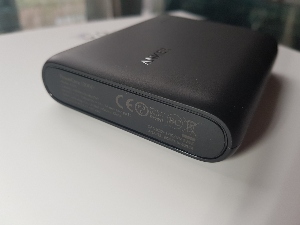
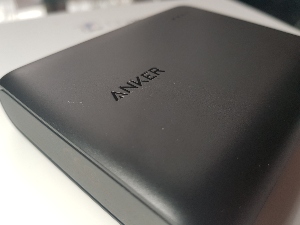
Pros & Cons:
Pros:
Two ports enable simultaneous charging of two devices
High-quality materials
Incorporates Anker’s newest technologies
Solid recharging time
Cons:
Slow output charging (over 2 hours to charge an average phone)
Rating
Power & Performance (1 to 5 stars)
Design & Build (1 to 5 stars)
Technology (1 to 5 stars)
Overall Rating (average of above)
Key Product Specifications
Key Specs:
Capacity
13,000 mAh / 46.8 Wh
Dimensions (LxWxH)
3.8 x 3.1 x 0.8 in / 9.6 x 7.9 x 2 cm
Weight
8.5 oz / 240 g
Output & Input Charging:
Average Charging Time of a Mobile Phone (average battery capacity 3000mAh)
2 hours and 10 minutes
Average Recharging Time (from 0% to 100%)
6 hours and 30 minutes
Ports
2 x USB-A Output: 5V/3A
Micro USB Input: 5V/2A
Charging Technology
PowerIQ - high-speed charging for all devices
VoltageBoost - prevents cable resistance from slow charging
MultiProtect Safety System - premium LG battery cells to keep you and your device safe
Flight Status
Under 100WH
Safe to take on board.
Other Features
18-Month Limited Warranty
Lifetime Technical Support
Ideal For?
Travelers
Students
Commuters
Businesspeople
What’s Inside?
PowerCore 13000 portable charger
Micro-USB cable
Travel pouch
Welcome guide
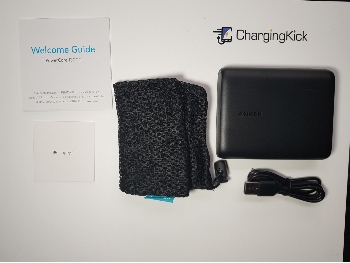
Power & Performance
Battery Capacity
Battery capacity in mAh and Watts
The Anker PowerCore 13000 has a battery capacity of 13,000 mAh / 48.1 Wh. This battery is not as common as 10,000 mAh, but it’s a great solution for something between 10,000 mAh and 20,000 mAh. It offers extra energy, without adding excessive extra weight, so it’s a win-win. The power bank should provide enough energy to charge most phones 3 times. Mobile phones with a big battery should fully charge twice.
Capacity test: discharge the fully charged power bank
Have you ever wondered whether a power bank has its battery capacity? Does it really have 5,000 mAh or 10,000 mAh, as advertised? What is the real battery capacity?
To check the actual battery capacity we need:
The fully charged power bank
A USB tester that shows the current, voltage, mAh, and charging time.
The USB mini adjustable load receives energy from the power bank and releases it safely via the fan. This is the safe way to discharge a fully charged power bank and measure the real battery capacity.
I connect the dummy load (amperes are set to 2) to the USB tester, then plug it into the fully charged power bank. Once that’s done, I wait until the power bank’s battery goes flat. The screen on the USB tester will display the Watt-hours and the amount of mAh consumed. These data show the real battery capacity.
Using the aforementioned procedure, I tested The Anker PowerCore 13000. Here are the results:
Capacity Test
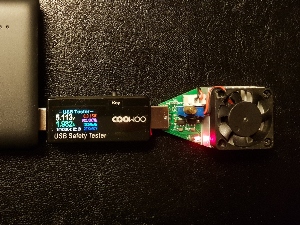
Discharge Time - 4 hours and 12 minutes
Watt-Hours - 42.9 Wh
Ampere hour - 8,329 mAh
The real battery capacity is 8,329 mAh. This mAh measurement shows you the energy you will fully use to charge your mobile phone. It’s not 13,000 mAh because the unit is converting energy from 3.7V (the power bank’s battery voltage) to 5V (USB voltage). This loss occurs in every power bank.
When you know the advertised and real battery capacity, it’s possible to measure the battery efficiency, which in this case is 87%. Manufacturers frequently don’t share this information. Efficiency above 90% is considered very good. The battery efficiency in this power bank is solid, better than the average.
Disclaimer: Every test can produce different results, but only small variations.
How many times can you charge the most popular mobile phones in 2020?
To put the battery capacity into perspective, I will use a formula for Real Battery Capacity and calculate how many times the Anker PowerCore 130000 can charge the top 10 most popular mobile phones in 2020. Perhaps you own one of them, or at least you know your mobile phone’s battery capacity.
From the previous test, we know the real battery capacity is 8,329 mAh.
Once we know the real battery capacity, we simply divide it by the enlisted mobile phones’ battery capacity to find out how many times it can be charged.
Mobile Phone Model | How Many Times Can It Be Charged? |
4.61 | |
3.05 | |
2.88 | |
2.88 | |
3.24 | |
7.13 | |
2.88 | |
4.13 | |
3.09 | |
2.60 |
The Anker PowerCore 13000 has enough energy to charge almost all phones at least twice. I find this power bank useful especially for phones with bigger batteries over 4,000 mAh. You can get two full charges and still enjoy a relatively small power bank.
Output Charging
Charging Time & Power Usage
Power banks are used mainly to charge devices. Therefore, this review would not be completed without testing output charging. For this, knowledge of the device’s charging time is crucial. Frequently it is one of the most important factors in the purchase of a power bank.
For these tests, I used two mobile phones:
Huawei P10 with a battery of 3200 mAh (Huawei SuperCharge)
Samsung S8 with a battery of 3000mAh (Adaptive Fast Charging)
Both phones support fast-charging technology.
To record data (current, voltage, mAh, time) I used a USB tester.
Real-life examples of test-charged phones demonstrate what you can expect after purchasing a power bank.
I was curious about the efficiency of the output charging of this power bank. It’s equipped with PowerIQ, Anker’s fast-charging technology. However, if two ports are used simultaneously, they can only receive up to 3A each. That said, fast charging might only occur when you charge only one device. Let’s find out.
Charging via USB-A (Huawei)
%20-%20Finish.jpg?alt=media&token=411c654c-0f19-4c73-8e78-0e7057552fa9)
Nearly 2 hours and 20 minutes to a full charge! The charging rate most of the time was 5V/1.1A. This is very disappointing. I already doubted that it could provide fast charging to two devices simultaneously, but it doesn’t provide a standard charging speed to one! The power bank delivered 2,427 mAh / 12.2 Wh in total.
Charging via USB-A (Samsung)
%20-%20Finish.jpg?alt=media&token=e5b71a49-da34-4b14-9824-c7ae84569018)
It took 1 hour and 53 minutes to charge Samsung S8 – another surprisingly poor result. The power bank was charging on average at 5V/1.3A. The mobile phone received a total of 2,197 mAh / 11.1 Wh.
Charging two phones simultaneously
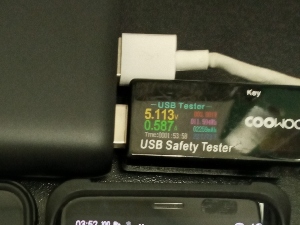
It took 1 hour and 53 minutes to charge two mobile phones at the same time. Another surprise. Considering the previous test, I expected it would take up to 3 hours to charge both devices. Due to the ports' layout, I couldn’t use both USB testers, but one provided enough insight. The Huawei P10 received 2,259 mAh / 11.6 Wh, while the Samsung most likely received around 2,000 mAh. That said, the available battery capacity in this power bank should be enough for 4 full charges.
A roundup of output charging
It’s a peculiar result. On one hand, individual charges were below expectations. It seems the ports don’t work at full efficiency. On the other hand, simultaneous charging met my expectations. There’s a chance that the device I tested was faulty, hence these results. It requires further investigation.
Input Charging
In terms of input charging, the power bank is rated at 5V/2A, which is standard in most power banks. With this battery capacity, it should take around 6-7 hours to get to a full charge.
I charged the power bank twice. The first test, via a standard charger rated at 5V/2A charging speed; a charger most of us have. For the second charge, I used the charger rated 65W, the fastest type of charger, able to charge compatible laptops.
Recharging via Standard Charger 5V/2A

It took 6 hours and 30 minutes to get to full charge. No surprises here. It’s a solid time. Constant charging rate at 5V/2A. The power bank received a total of 11,424 mAh / 59.7 Wh.
Recharging via Fast Charger
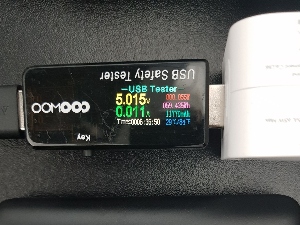
Six hours and 36 minutes for a full charge. The same as the previous test – no surprises and a solid time. The charging rate was constant at 5V/2A. The power bank received a total of 11,770 mAh / 59.4 Wh.
A roundup of input charging
Strong performance in input charging, and no surprises. Plug it in overnight and you’ll wake up with a fully charged power bank.
Score
Design & Build
Dimension & Weight
Weight in ounces and grams
8.5 oz / 240 g
Measurement in inches and centimeters
3.8 x 3.1 x 0.9 in / 9.6 x 7.9 x 2.3 cm
The Anker PowerCore 13000 has an unusual shape. While most power banks are rectangular, this one is almost square. Despite its extra width, it slides nicely to a pocket and doesn’t weigh as much as big power banks with 20,000 mAh batteries.
Design & Material
The Anker PowerCore 13000 has the same design elements as most Anker products: it’s minimalistic, stylish, and sleek.
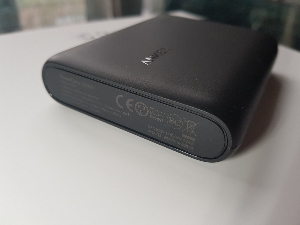


The power bank is made of solid plastic, separated into 4 pieces: front and back, and two sides. Everything stays strongly together. There are no loose pieces or squeaky sounds.
It’s primarily sold in black, but occasionally red and blue versions are available.
The power bank has a matte finish that prevents smudges and fingerprints and enhances grip.
It attracts small amounts of fluff, but that’s mainly due to the black color.
On the front is the Anker logo and four blue LED lights that indicate the battery level. The back is all black. On the side, next to the lights, are two USB-A ports for output charging and a Micro USB port for input charging. On the corner, next to the lights and Micro USB port, is the power button.
The PowerCore 13000 has been tested for excessive impact, vibration, and temperature. It’s well-built, but not rugged, so I don’t advise you to throw it on concrete.
Overall, it's a well-designed and well-built power bank.
Score
Technology
Ports
The PowerCore 13000 has two USB-A ports rated at 2.4A each, or a maximum output of 3A if used simultaneously. A micro-USB port is used for recharging and is rated at 5V/2A.
2 x USB-A Output: 5V/3A
Micro USB Input: 5V/2A
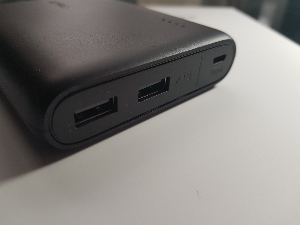
Tech
Anker’s products feature cutting-edge technology. Their products typically meet and exceed all industry standards.
List of technologies:
PowerIQ - high-speed charging for all devices
VoltageBoost - prevents cable resistance from slow charging
MultiProtect Safety System - premium LG battery cells to keep you and your device safe
Score
Conclusion
Overall Opinion
Is the PowerCore 13000 as good as expected? Certainly, it’s a fine power bank with a high-quality battery, a simplistic but sleek design, and a solid build. Sadly, its charging performance is disappointing and doesn’t live up to expectations. It’s still worth the money if charging speed is not a key consideration. Its size, weight, and battery capacity match perfectly.